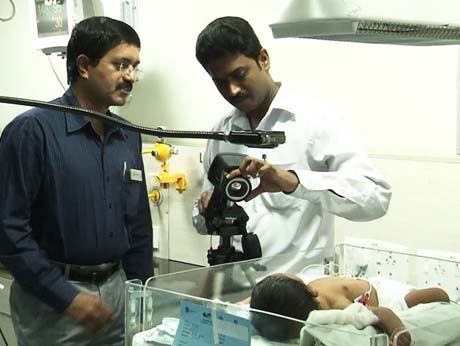
Bangalore,February 8, 2014: Imagine being able to monitor the vital signs of a baby in neonatal care in the hospital without having to stick a lot of patches and sensors to its delicate skin. Imagine being able to measure the baby's as heart rate, temperature and respiratory functions without contact! Researchers at the Xerox Research Centre India (XRCI), have joined hands with the Manipal University Hospital to just that.
“We are pleased to report that early results from the remote sensing research are very promising and show accuracy levels that are close to current results captured via probes attached to the patient,” said Dr. Vijay Kumar a Paediatric Surgeon and a Principal Investigator on the project from Manipal University Hospital. The observation process is absolutely safe and does not harm patients. Light from the cameras penetrates into the skin allowing information to be captured and converted to health indicators.
The Xerox remote health sensing technology opens up exciting new avenues not just for non contact clinical measurements in a hospital situation but in the broader area of telemedicine, suggests Dr Sophie Vandebroek, Chief Technology Officer at Xerox and President of the Xerox Innovation Group of six R&D labs world wide including Bangalore. A non-contact system that is accurate can not only greatly improve the comfort of the patients especially very young children -- but also has possible applications for remote healthcare at homes, clinics and in rural villages and locations that may be far from a specialist, she says..
The technology developed by Xerox researchers in Bangalore can also detect cardiac dysrhythmia (irregular heart beat) without any probes touching the patient. Xerox has developed image & signal processing algorithms that convert patient video captured from off-the-shelf cameras into health indicators. The innovation involves measuring light emitted by the body and current state of the art can penetrate up to 10 mm beneath the skin... which means it could potentially turn out to be a way of detecting skin cancer or breast cancer by less traumatic methods than hitherto possible, adds Manish Gupta, Director XCRI. He leads a team of just under 30 in Bangalore -- which he hopes to ramp up to around 100 in coming years.
XCRI is also engaged in research which has recently translated into portable banking solutions for rural areas where communication and networking may be a challenge. The Centre is in a pilot stage with its solution, working with banks in Karnataka state.